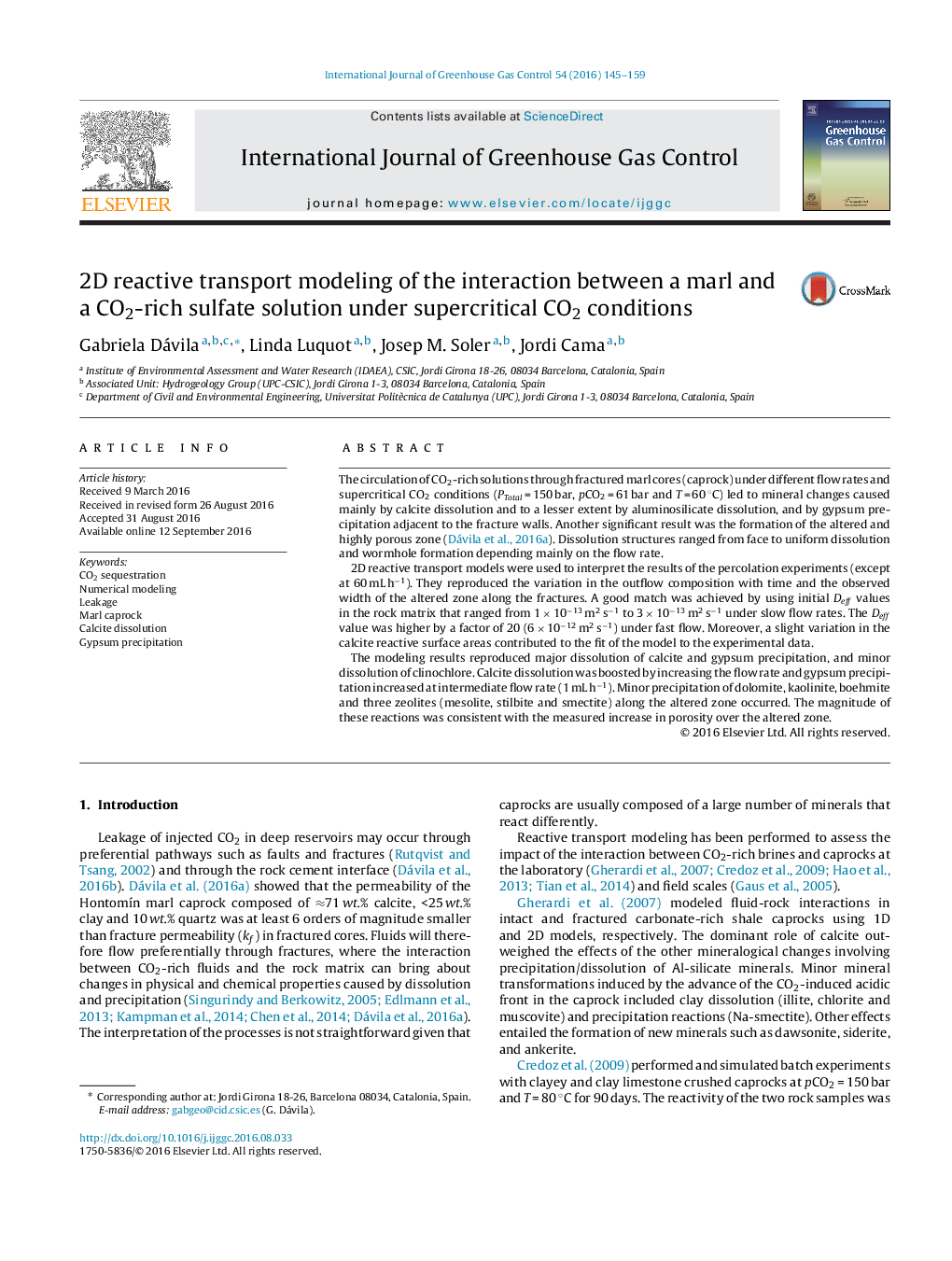| کد مقاله | کد نشریه | سال انتشار | مقاله انگلیسی | نسخه تمام متن |
|---|---|---|---|---|
| 6481531 | 1521966 | 2016 | 15 صفحه PDF | دانلود رایگان |

- 2D-RT modeling of interaction between fractured marl rock and CO2-rich solutions.
- Agreement between the experimental and calculated output concentrations.
- Mineral diss./ppt. contributed to form a degraded zone along the fracture wall.
- Composition of the injected solutions affected the resulting core porosity.
- Calculated porosity in the reacted zone was higher at the fracture wall contact.
The circulation of CO2-rich solutions through fractured marl cores (caprock) under different flow rates and supercritical CO2 conditions (PTotal = 150 bar, pCO2 = 61 bar and T = 60 °C) led to mineral changes caused mainly by calcite dissolution and to a lesser extent by aluminosilicate dissolution, and by gypsum precipitation adjacent to the fracture walls. Another significant result was the formation of the altered and highly porous zone (Dávila et al., 2016a). Dissolution structures ranged from face to uniform dissolution and wormhole formation depending mainly on the flow rate.2D reactive transport models were used to interpret the results of the percolation experiments (except at 60 mL hâ1). They reproduced the variation in the outflow composition with time and the observed width of the altered zone along the fractures. A good match was achieved by using initial Deff values in the rock matrix that ranged from 1 Ã 10â13 m2 sâ1 to 3 Ã 10â13 m2 sâ1 under slow flow rates. The Deff value was higher by a factor of 20 (6 Ã 10â12 m2 sâ1) under fast flow. Moreover, a slight variation in the calcite reactive surface areas contributed to the fit of the model to the experimental data.The modeling results reproduced major dissolution of calcite and gypsum precipitation, and minor dissolution of clinochlore. Calcite dissolution was boosted by increasing the flow rate and gypsum precipitation increased at intermediate flow rate (1 mL hâ1). Minor precipitation of dolomite, kaolinite, boehmite and three zeolites (mesolite, stilbite and smectite) along the altered zone occurred. The magnitude of these reactions was consistent with the measured increase in porosity over the altered zone.
Journal: International Journal of Greenhouse Gas Control - Volume 54, Part 1, November 2016, Pages 145-159